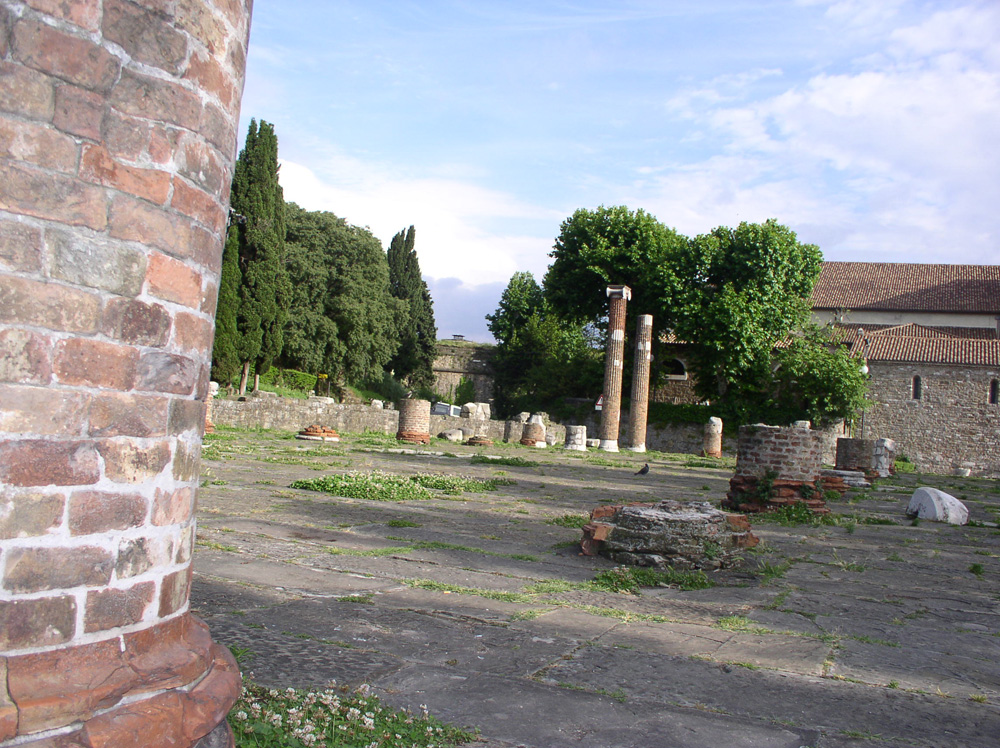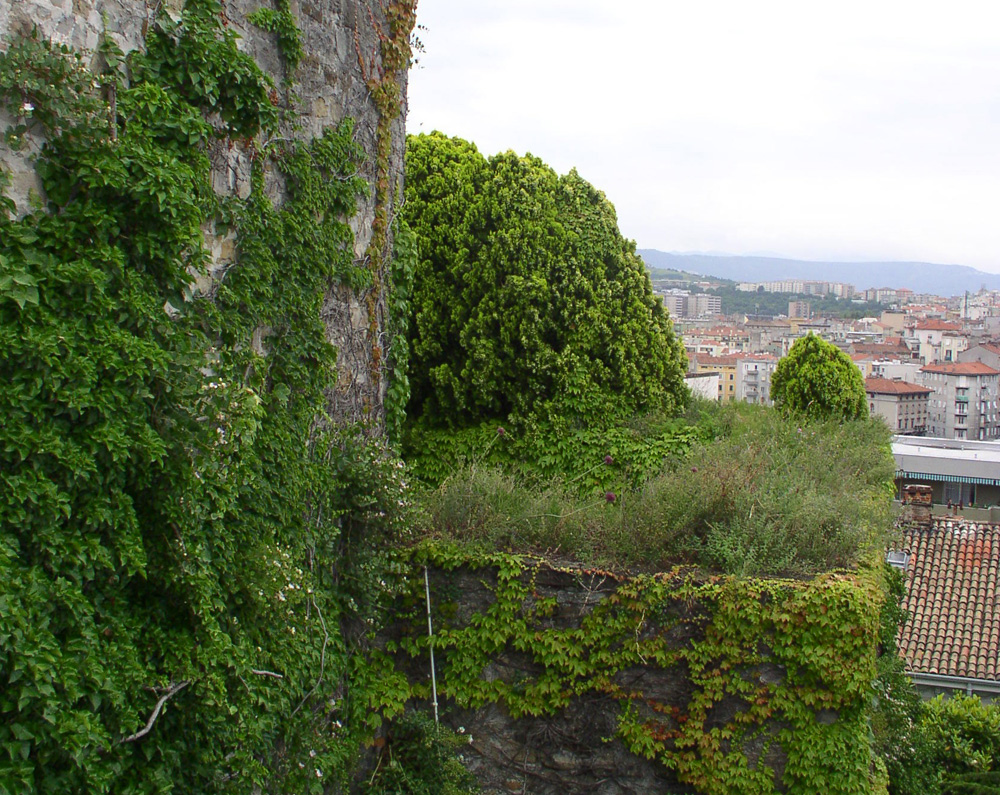| |
| |
And here the real fun begins. Ryanair has two daily flights from London to Bergamo. The first leaves at 6:35 in the morning. The second arrives at 10:00 at night. When we initially booked our tickets, we guessed that it would be easier to get to the airport in London early in the morning than to get home from Bergamo late at night. We never considered the idea that both were impossible.
We had already moved up to London to be close to Victoria Station, where we knew we could catch a bus to the airport. We calculated that we would need to leave at 3:30 a.m., so we asked for a 3:00 wake-up call at our hotel. The call never came. We awoke at 4:50 a.m. to sunshine, and knew we were in trouble. The hotel called a cab immediately, and both they and the cabbie assured us that we would be fine. But they reckoned without Ryanair. When they say check-in closes strictly 40 minutes before the flight, they mean strictly. We arrived thirty minutes before takeoff. As we hurried into the airport, we passed several signs prohibiting threats and bodily harm to airline employees. At each check-in desk was a large sign proclaiming, "if you're late, we won't wait!"
They wouldn't let us on the plane, nor would they let us on another without charging more fees than the tickets cost in the first place. Flights to Torino were full, and the next flight to Bergamo was the one that arrived at 10:00 p.m. We'd be on trains all night long. We stepped aside from the desk to consider. As we considered, we listened to all the other people with problems. In the end, we're not sure why Ryanair has a "customer service" desk. There was no service going on, and we doubt that anybody there will still be a customer after their experience.
Some people had "missed" their flights like us, and were discovering that Ryanair makes most of its money fining people like them (or selling them new tickets). One man with a baby had actually checked in, but was turned away at the gate because he took too long to get there. (The journey to a Ryanair plane usually involves walking from one end of the airport to the other, taking a shuttle bus, and then walking an extended distance over the tarmac.) He talked to an employee, a supervisor, and the supervisor's supervisor. The supervisor's supervisor informed the poor man that he would have to present his story in writing, and that he was not going to listen to it in person. (Why he actually came downstairs to say this rather than just sending a courier with a letter explaining to the customer that he would need to write a letter, we're not sure.)
We tried walking over to the counter of another budget airline (Luton airport is full of them). But it was a Bulgarian airline that only flew to Spain and Bulgaria. Not too helpful. We found another airline, but it would have cost over 300 pounds to book another flight.
While we were there, we heard the story of the man next to us in line, who arrived at the check-in desk with plenty of time, only to find that his name wasn't on the flight manifest. So they sent him over to the customer service desk. He said he was there because his name wasn't on the manifest. The woman behind the desk informed him that he was there to pay a "missed flight fee." He tried to explain that he hadn't missed his flight, but by that time he had.
We went back to Ryanair and asked what other flights they had to Italy. Parma and Trieste were both leaving at 11:00 a.m., but from a different London airport. We'd never been to Trieste and we weren't keen on waiting around at the airport all day to take a late flight and then ride the train all night. We were ready to make lemonade out of these lemons. So we hopped on an hour and a half bus-ride to Stansted Airport (equally far from the center of London, but in a different direction), where after having our toothpaste tested for explosives because we forgot to put it in a clear plastic bag, we made our plane.
One bus ride past the sea later, we were in Trieste, Italy's gateway to Eastern Europe. Street signs were in Slovenian and Italian, and the landscape was dotted with scrubby evergreens and pink-puffball bushes. We dropped off our luggage at a hotel and set off to explore the city. We had a little tourist map we'd picked up at the airport, and it took us through the dramatic, wide streets, and past a Roman amphitheater that was inhabited by some suitably mysterious cats and set up with modern acoustics for a series of summer programs. We wound up through the narrower streets of the old city until we reached the summit of the hill.
It is crowned by a Roman forum, half-way and hideously restored with red bricks in the early 20th century. Just above the forum is the Castle. It is a gorgeous and imposing castle, improved by an extensive and very aesthetic restoration. We just peeked in, since it was about to close. Then we visited the Cathedral next door, where we saw some beautiful paintings and a little vault filled with strange little artifacts and treasures.
We descended the hill back into the modern city, where eventually through an archway we could see the bay. Coming out through the archway, we entered a dazzling plaza framed in classical buildings and fronting the harbor. Trieste's "Piazza della Liberta" is a jewel, embodying the effusive descriptions on our tourist map of Trieste as a "final Mediterranean daydream."
I was interested to see that the presiding building in the Piazza was the City Hall (offices of the Comune), which was flanked by the buildings dedicated to the region and the province. Here in Italy, the authority that plays the biggest part in people's lives is the comune, or city. We've certainly found that to be the case.
One of the indispensable experiences of Trieste is a stop at one of its historic cafes. We sat down outside of one in the Piazza and ordered dessert (since we don't drink coffee). It was delightful to sit outside, watching the children playing and the world going by and the sun setting from the relaxing vantage point of a cafe table. We were slightly taken aback when the occupants of a neighboring table finished their repast, and a swarm of pigeons instantly descended on the remains. Surely a similar scene must have been the inspiration for the legend of the Greek harpies.
We walked out on the waterfront and were pleasantly surprised to find that the water was crystal-clear and full of fish of all sizes and shapes. Walking along the pier was almost as good as snorkeling.
After a recharging our batteries with a good night's sleep, we climbed up the hill again and this time went in the castle. It is well-preserved, well-renovated, and home to a few very interesting collections. We first walked out on the walls around the castle to get a beautiful view of the city, harbor, and surrounding countryside. Then we descended into what felt like an Egyptian catacomb for a look at some beautiful mosaics. The area surrounding the castle was formerly a Roman burial ground, so there were also quite a few gravestones with Latin epitaphs and lovely carvings.
Upstairs were the restored living apartments, where the lovely old furniture is displayed along with a large armory of weapons of different ages. Trieste, apparently, has seen its share of battles, the last of which culminating in its being added to Italy during WWII (or "liberated," as the many monuments around town proclaim) some seventy or so years ago.
We took one last long look at Trieste from the castle windows, and then made our way back down to our hotel, where we quickly packed our bags and toted them a block to the train station. Eight hours later, we were toting them back up the cobblestone streets of Saluzzo, feeling like we were home, although we're moving next week.
|
|

Panorama of the sea front |

|

|

|

|

|

|

Roman Forum (with a modern attept to restore with red brick...) |

acnient Roman amphitheater (complete with black cat) |

|

Trieste castle |

|

|

|

woodwork with knight looking on |

|

|

|
|
|
|